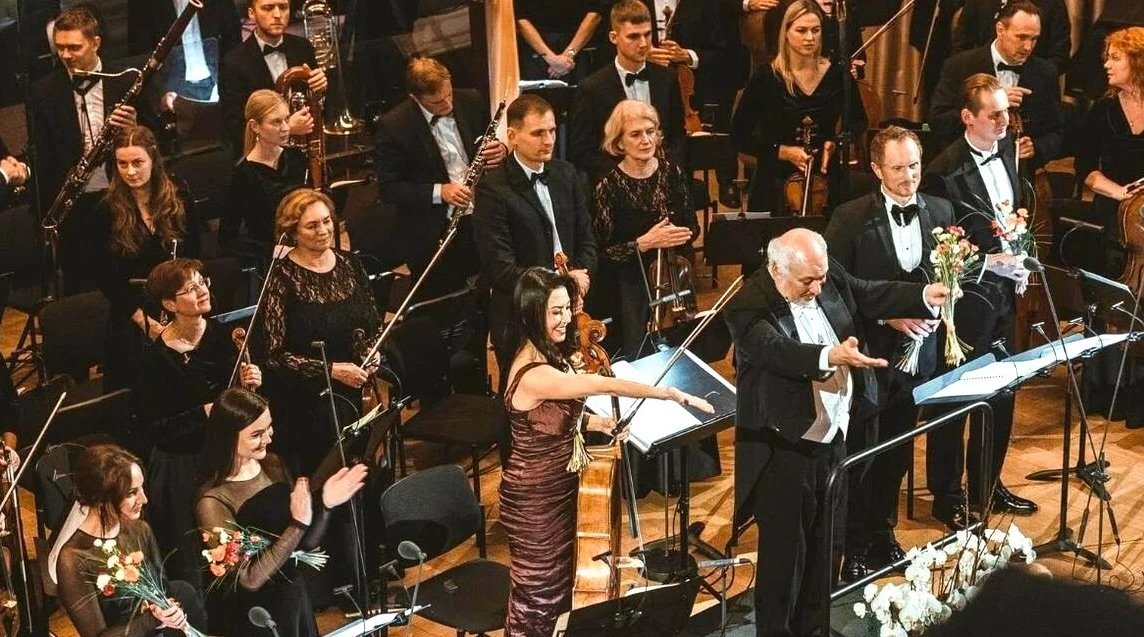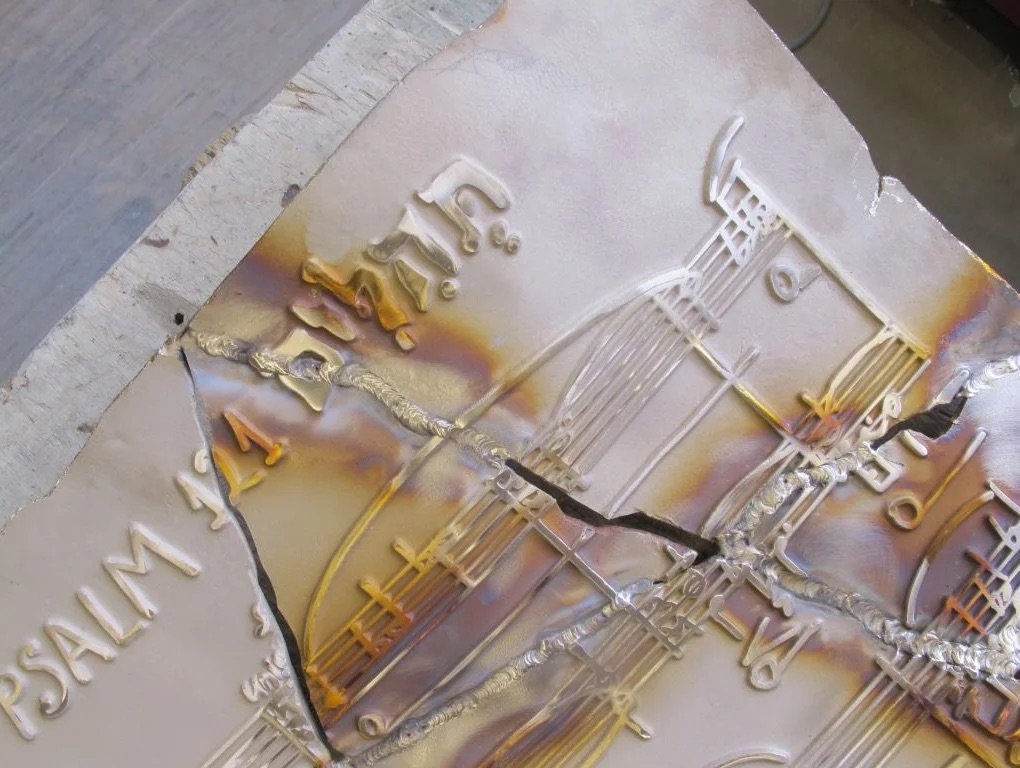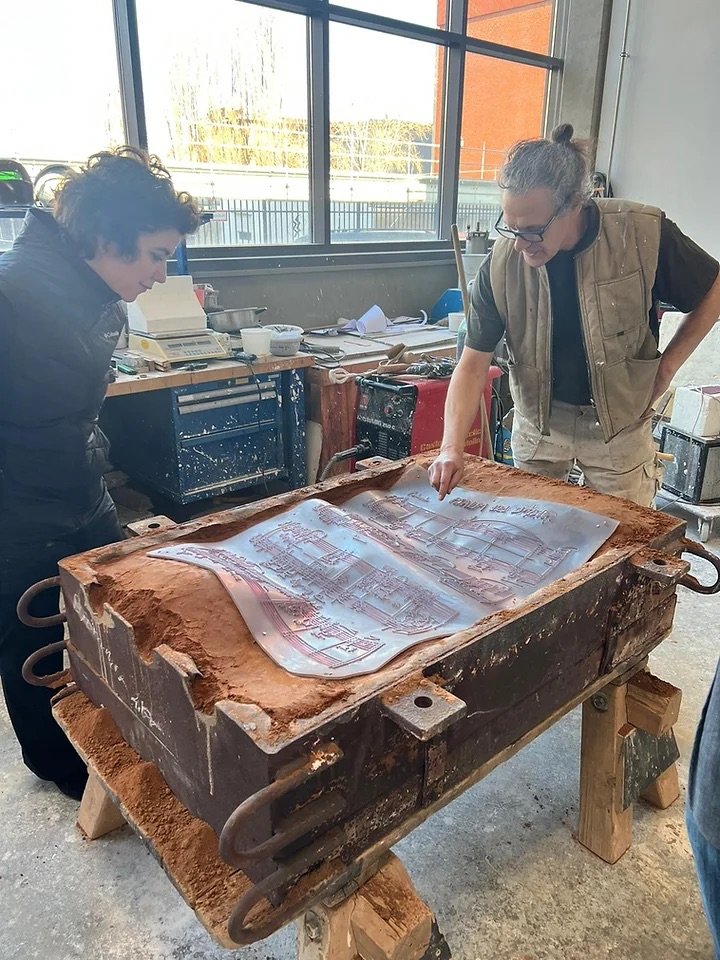The Art of Breakage and Repair — Lera Auerbach’s new symphony
On April 19th, Lera Auerbach’s Symphony No. 6, Vessels of Light, the composer’s monumental work for violoncello, choir, and orchestra, receives its U.S. premiere at Carnegie Hall. Commissioned by Yad Vashem, the World Holocaust Remembrance Center in Jerusalem, it honors Japanese diplomat Chiune Sugihara, who saved thousands of lives during the Holocaust.
For cellist Kristina Reiko Cooper, the event marks an exciting moment of reflection on her essential role in the work’s production and the many aspects of her life coming full circle.
(Photo Credit: Alon Shafransky)
Coming from the classical genre with a passion for the contemporary idiom, she recently performed as the symphony’s cello soloist, at its world premiere in Kaunas, Lithuania, in October, and at its Czech premiere in Prague in March. Performing alongside her was the large orchestral ensemble, a choir, additional male and female solo singers — and poetic whisperers. Cooper will continue performing the symphony’s premieres during its first two years, worldwide.
(Photo Credit: Lina Matuleviciene, from the Premiere in Kaunas, with the Kaunas Symphony Orchestra and Constantine Orbelian, who will also conduct the Carnegie Premiere)
Not long after Cooper met her husband, converted to Judaism, and moved to Israel, she learned about the heroic acts of the Japanese diplomat Chiune Sugihara (1900-1986), who defied orders as the vice-consul of Japan in Kaunas, Lithuania, during World War II, by "passing" so-called transit visas - issued by the Dutch Consul, Jan Zwartendijk - through Japanese territory to persecuted Jews fleeing Europe.
“These actions saved thousands of lives, including that of my husband’s father, Irving Rosen, says Cooper. “I am half-Japanese and understand Japanese culture as part of my DNA. There certainly is an element of obedience ingrained in the Japanese tradition, but simultaneously, the culture also connects to the ethical code of the Japanese Samurai warriors. The so-called Bushido Code, in essence, describes the moral obligation to do the right thing, even at great personal risk and in times of peril.”
(Photo: Chiune Sugihara, Yad Vashem Archives)
Shortly before his death, Sugihara got included by Yad Vashem, the World Holocaust Remembrance Center in Jerusalem, as one of the Righteous among Nations, non-Jews from various places and walks of life, who risked their lives to help save their Jewish neighbors.
Immersing herself in the study of the Jewish tradition, which became an integral part of her life, Cooper also became familiar with the meaning of the Hebrew concept of Tikkun Olam, the repair of the world, as a shared societal responsibility of each individual person. An active member of diverse charitable organizations, including the Israel-America Cultural Foundation, she seeks to live up to this merit.
With her husband’s family’s heritage so closely connected to Sugihara’s heroism, Cooper was eager to tell his story – one marked by war, loss, and breakage but also bravery and repair. As a cellist, she also wanted to find a way to connect her two distinct cultural identities within the realm of music. Cooper reached out to Yad Vashem and its affiliated group, the American Society of Yad Vashem, to initiate a collaboration.
She had spent her formative years as a musician at Juilliard, receiving her BA., MA., and Doctorate degrees. There she befriended her former classmate Lera Auerbach, the Jewish, Soviet-born multi-dimensional artist and one of today’s leading female composers. Reconnecting with Auerbach, Cooper saw in her friend a brilliant voice to convey her message artistically, and Yad Vashem, with the support of its American Society, agreed to commission Auerbach to write a piece memorializing Sugihara.
(Photo Credit: Raniero Tazzi – Lera Auerbach)
“Lera is, simply put, a genius,” she remarks during our interview by phone from Tel Aviv, where she resideswith her husband, the investment banker Len Rosen and their three young children. She is such an all-encompassing talent in whatever medium she works, whether as a conductor, pianist, composer, poet, or visual artist,” Cooper says.
As a conceptual artist, Auerbach often pushes the boundaries of the medium she works in. This has beenthe case with her symphony Vessels of Light and her sculpture Silent Psalm, companion pieces born out ofthe same vision.
The two works merge the Hebrew concept of Tikkun Olam (the repairing the world) with Kintsugi, the Japanese craft technique also known as Kintsukuroi (Golden Repair), in which the artist breaks pottery and repairs the pieces using gold-dusted glue. This illuminates the scars of breakage instead of masking them,thereby enhancing the beauty and uniqueness of the object.
The symphony borrows from Kintsugi, interlacing the melodic lines of the cello with – at times whispered –choral recitations of fragmented Yiddish poems. As a tribute to the language, which lost so many people who spoke it, Auerbach chose Yiddish texts by Yisroel Emyot, Dovid Hofshteyn, Simkha-BunimShayevitch, Peretz Markish, Avrom Sutzkever, Itzik Manger, Reyzl Zhiklinksi, and Moyshe Teyf. These were transliterated for Auerbach by star pianist and Yiddish poetry recitalist Evgeny Kissin and the former Editor of the Yiddish Forward, Boris Sandler. Like the golden glue of Kintsugi, the cello lines metaphoricallyrepair the broken stanzas of the poems of the libretto (The choir’s score).
As Auerbach explains, Psalm 121 of David is the song of Ascents — “I lift my eyes to the mountains. Wheredoes my help come from?” — is the vessel she shatters in her symphony. Its words appear as text in the libretto but are not sung aloud. Instead, they exist only as an internal meditation, remaining silent as a metaphor for the Holocaust— the unspeakable, fragmented, and in shards.
Kintsugi takes a more literal form in Auerbach’s sculpture Silent Psalm. There, cast in bronze, underneath its Hebrew inscription is the musical notation of the melody she composed for Psalm 121 of David, missing from the symphony. Broken into chards and repaired with Kintsugi, the sculpture’s exposed cracksare filled with a patinaed golden thread in the shape of a Magen David (Star of David) appears.
Auerbach describes her creative process: "Like with the mold of the sculpture, after completing the Psalm,I shattered it; its fragmented musical material in the symphony – without words – appears in the interludes, with the solo cello in a binding embrace that holds the different parts together, making them more robust and creating a sense of unity."
(Photo Credit: Rafael DeStella at Noack Foundry, Lera Auerbach during the preparatory work for her sculpture “Silent Psalm”)
Both the symphony and the sculpture represent the narrative arc that binds the suffering and survival of the Jewish people scattered across the world, who astonishingly remain multiculturally united. It also speaks to a universal theme, revealing the human condition as a moral quest for beauty and repair, even amidst destruction and violence.
Cooper realized an expansive vision for this project. She also captured that vision in a documentary film titled “A Symphony for Sugihara,” produced by Mark Wahlberg. Soon to be released, the film will follow Cooper behind the scenes and capture her tireless efforts to immortalize Sugihara’s legacy through the international performances of Auerbach’s symphony.
“In her ingenious work, Auerbach musically interweaves the Jewish soul through every note and gesture. Telling the harrowing story of the Holocaust, including that of my family’s heritage,reflects profoundly on my life. I was thrilled to become a founding part of the dissemination of such a great work, which, thanks to all the wonderful people involved, has truly gained a significant, global dimension,” she says, crediting, amongst many others, renowned artistmanager Edna Landau, as a unique source of advice.
“I am hopeful it will continue to provide meaningful opportunities to bring out its message,” says Cooper. That message is unambiguous for her: “Our current world, most unfortunately, is lacking in compassion. With all the chaos, strife, displacement of refugees, war, totalitarian uprisings, racism, renewed anti-Semitism, anti-Asian hate, and hate in general, Sugihara's message is simple — and it can change the world. Of course, the circumstances may be complicated, and parsing through the "noise" may take a kind of focus that we have a hard time bringing forth these days — but doing the right thing? Knowing what is right or wrong? That is usually pretty simple. We all need to tune out the noise and access our moral center, and as Sugihara did, do the right thing.”






